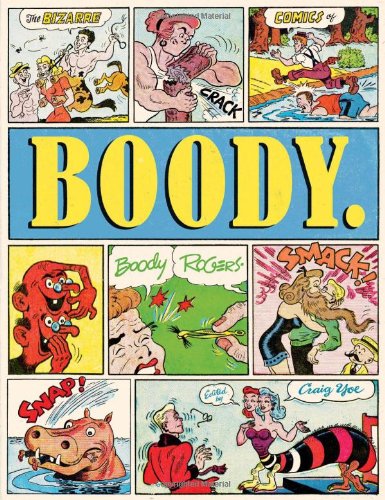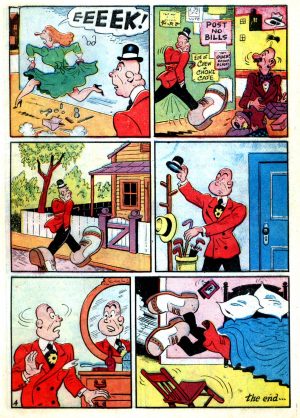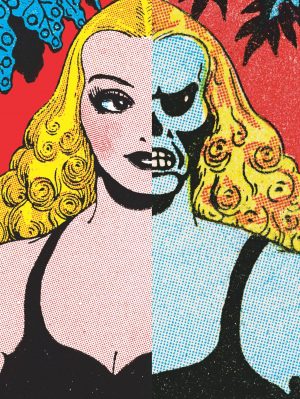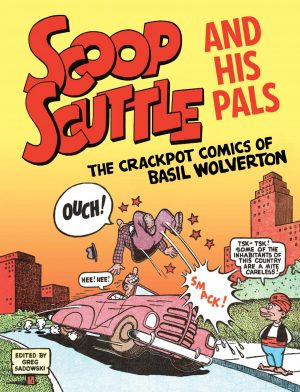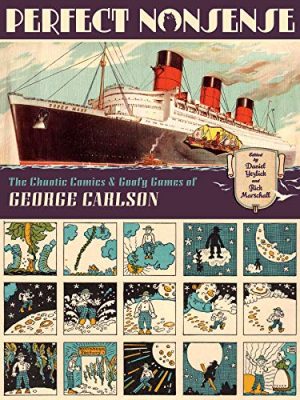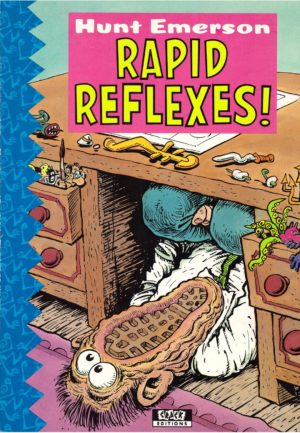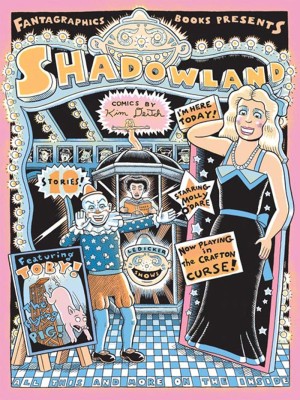Review by Win Wiacek
Born in 1904, Gordon “Boody” Rogers began his drawing career in the 1920s, when he palled around with Harold Gray, Frank Engli, Chester Gould, and Tex Avery among many other talented art stars–in-waiting. Refined, mature fans in the know will be intrigued to discover that Bondage artist Eric Stanton began his drawing career as Rogers’ assistant. When his roommate Zack Mosely began long-lived aviator strip Smilin’ Jack in 1933, Rogers was his assistant from day one. As a jobbing cartoonist, Boody also worked for prestigious magazines and on syndicated features and gag strips.
He was a major contributor to The Funnies, The very first American comic, published in 1936, with ‘Rattlesnake Pete’, from this landmark release leading off the compilation, before developing his own newspaper strip Sparky Watts in early 1939. He wrote and drew the feature until America joined the war, at which point Boody enlisted. On his return, he revived Sparky, a physical plainclothes superman, whose wild and wacky adventures were at once a spoof of the ubiquitous mystery men and a snappy, surreal satire on the American Way.
Rogers also originated a number of other properties, all in the comedy, teen and gag genres that rose in popularity after the costumed heroes diminished in stature after World War II.
His style is far more amenable to a British audience reared on Desperate Dan, Pansy Potter and the unrestrained genius of Ken Reid or Leo Baxendale rather than the two-fisted, yet anodyne fare of post-war America. His wild perambulations and freewheeling style of gag-upon-gag narrative often skirted bounds of taste (as all great comedy should) and his influence, as much as Basil Wolverton and EC Comics, can be clearly seen throughout the Underground Comix revolution of the 1960s and 1970s.
The material collected here was all published between 1948 and1950, although inadequately referenced. The broad range of tales perfectly illustrates the kind of manic energy and absurdist invention typified by 1930s screwball comedies. They’re bursting with the madcap pace of the teen movement as immortalised by Bob Montana’s Archie and littered with arcane dialogue, quick-fire set-ups and sharp punchlines building one upon another. Rather than being dated, these works have great resonance today. They’re also beautifully drawn and a total hoot.
Babe (“the Amazon of the Ozarks”) was a rustic and rambunctious take on Li’l Abner; a physically perfect hottie no man could resist – or beat. Four stories feature.
Jasper Fudd is a prim and prudish, dim-witted yokel who unexpectedly goes to college where he discovers he can run like the wind, whilst ‘Dudley, the Prince of Prance’ is an excellent – if potentially bewildering nowadays – example of the teen-oriented strip that spread like measles in the post-war years.
Sparky Watts is the undisputed star (sample art). He’s an affable everyman with amazing powers. He doesn’t fight crime, but empowered by Cosmic Rays which tend to shrink him to microscopic sizes when they fade, he frequently finds himself in strange places meeting the most peculiar creatures. He was aided (although that’s not really the correct term) by his assistant Slap Happy and eminent theoretician Doc Static. These six episodes are all from the post-war period, but wonderfully display the surreal punch and eye for visual characterisation that exemplified Rogers’ work.
This comfortingly substantial tome is a wonderful introduction to a comics master who never disappointed, working in a genre most comics fans won’t even be aware of these days. That’s their loss: don’t let it be yours.
